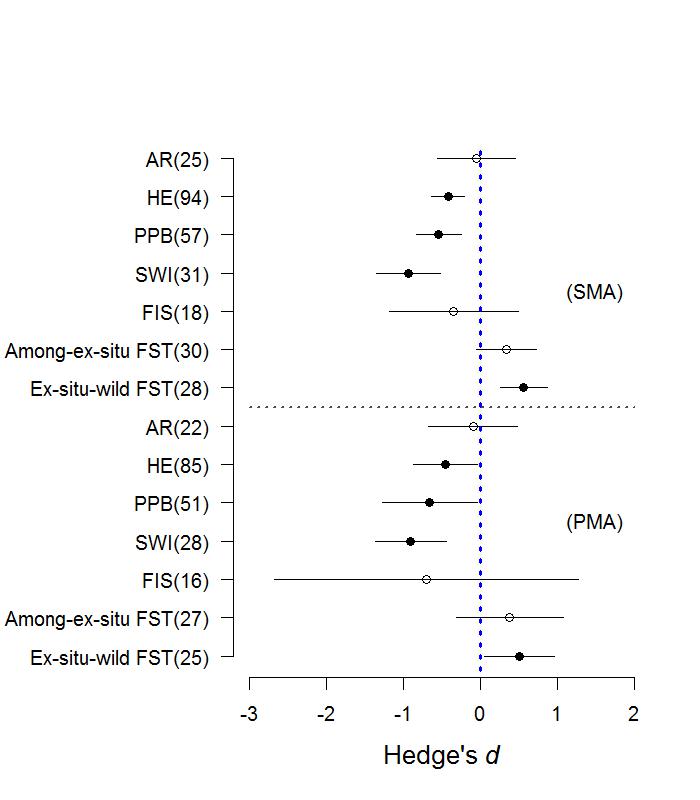Name:Mingxi Jiang
Tell:
Email:mxjiang@wbgcas.cn
Organization:Wuhan Botanical Garden
Ex-situ Plant Populations Do Not Well Capture Genetic Variation from Wild Source Populations
2020-11-19
Local extirpation of wild plant populations and losses of local biodiversity are occurring across the world. In this situation, ex-situ conservation has been widely used to protect wild plant species from extinction. Preserving genetic variation is one of the primary goals of ex-situ plant conservation. However, it remains unclear how genetic variation of ex-situ plant collections reflects wild source population diversity.
To fill this knowledge gap, Dr. WEI Xinzeng and Prof. JIANG Mingxi from Wuhan Botanical Garden conducted a global meta-analysis of genetic representativeness of ex-situ plant collections based on the comparison of genetic diversity, inbreeding coefficient, and genetic differentiation between ex-situ plant collections and their wild source populations.
Genetic diversity in ex-situ populations was significantly lower than their wild source populations, while genetic divergence between ex-situ and wild populations was significantly higher than among wild populations.
These results suggest that current ex-situ plant collections do not effectively capture the genetic variation of wild populations. Furthermore, the effect size of genetic diversity decreases and the effect size of genetic differentiation between ex-situ and wild populations increases with the duration of ex-situ conservation. In general, low genetic representativeness of ex-situ populations is caused by both initial incomplete sampling from wild populations and genetic erosion during ex-situ conservation.
"To prevent low genetic representativeness, several recommendations for future assessment and implementation of ex-situ conservation practices are needed” WEI said.
First, a thorough sampling design based on integrating information about spatial distribution range, genetic diversity, and genetic structure, as well as life-history traits of target plant species, should be employed. Second, it is necessary to assess levels of genetic diversity and genetic composition of the ex-situ populations that already exist but have not yet been assessed, and to add new individuals to the collections when necessary. Finally, genetic variation, inbreeding, and functional trait composition of different cohorts should be simultaneously compared between ex-situ and wild populations to reveal the potential genetic erosion and fitness decline in both the transplanted individuals and their progenies.
This work was supported by the National Key Research and Development Program of China and the National Natural Science Foundation of China. Relevant research results have been published in Conservation Biology entitled “Meta-analysis of genetic representativeness of plant populations under ex-situ conservation in contrast to wild source populations”.

Effect sizes (Hedge’s d) and 95%-confidence intervals of genetic parameters based on both standard meta-analysis (SMA) and phylogenetic meta-analysis (PMA). AR, allelic richness; FIS, inbreeding coefficient; FST, genetic differentiation; HE, expected heterozygosity; PPB, percentage of polymorphic bands; and SWI, Shannon-Wiener index. (Image by WBG)